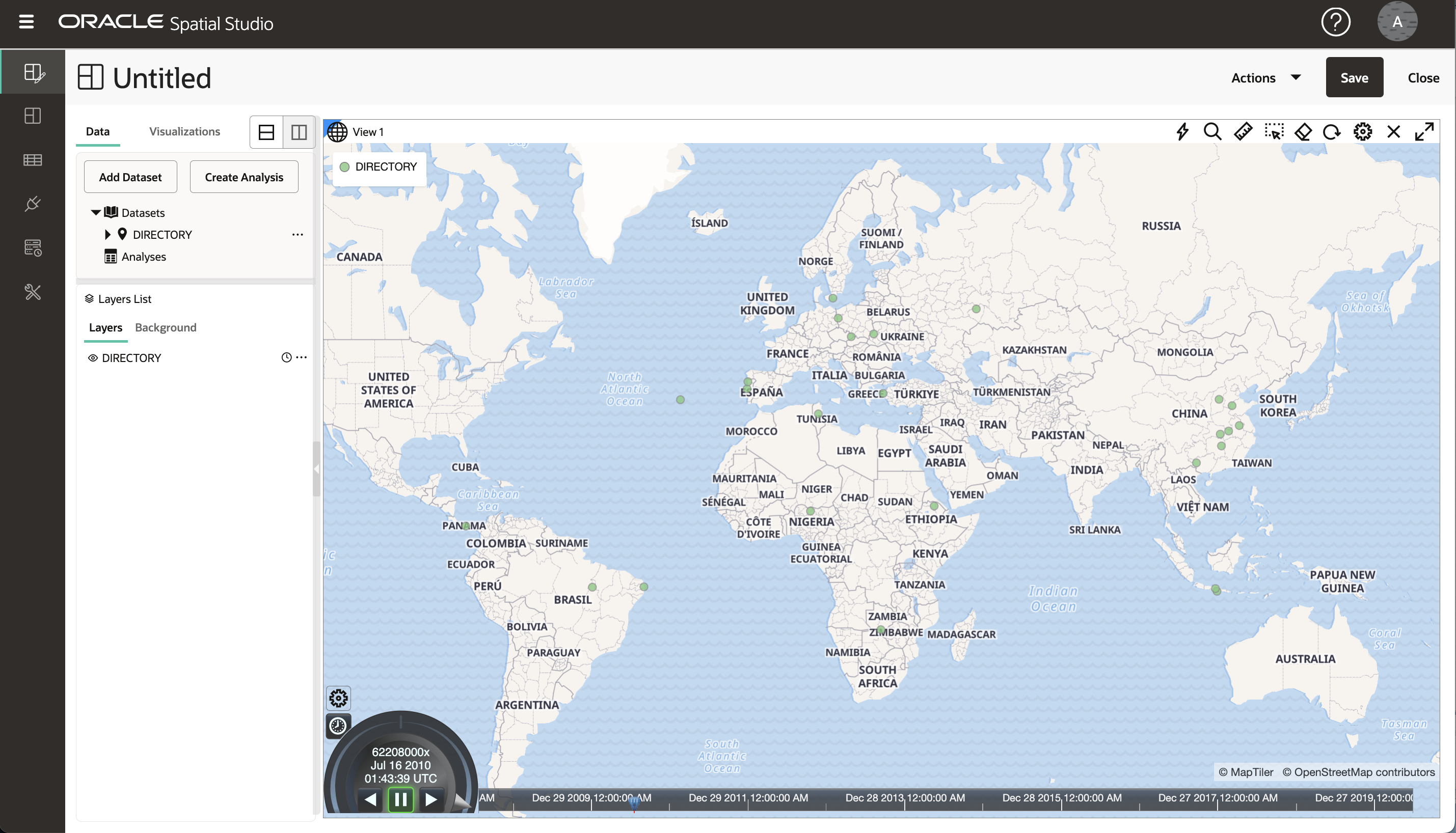3.10.2.5.7 Visualizing Non-Live and Non-Moving Objects Dataset
You can visualize a spatiotemporal dataset that simply contains different timestamp values in each row which are not grouped by any entity ids.
The following instructions assume that you have enabled spatiotemporal
for such a dataset and the dataset is already added to the project in the Active Project
page. See Configuring Spatiotemporal for Non-Live and Non-Moving Objects Dataset for more information.
Parent topic: Visualizing Spatiotemporal Datasets
